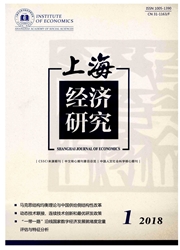

 中文摘要:
中文摘要:
本文针对上海2050年前的碳排放做了模拟,同时探讨了城市碳排放趋势的研究方法。针对城市问题,本文提出用逻辑斯蒂曲线逼近城市人口增长率,同时用经济动力学模型预测了上海市2050年前的经济增长率,进而采用朱永彬、王铮(2009)的最优增长率模型,对上海市未来能源消费量和碳排放量进行研究。结果显示,在当前技术进步速率下,在产业结构稳定进步的条件下,碳排放强度不断下降,下降速率为-0.057。上海市人均碳排放呈现倒“U”曲线增长,高峰出现在2035年。上海能源消费量和碳排放总量呈倒“U”曲线增长,碳排放高峰出现在2035年,能源消费高峰出现在2036年,达到高峰时间比同等条件下的全国高峰略早,但上海市的二氧化碳减排任务还任重道远。
 英文摘要:
英文摘要:
This article did some simulation in allusion to Shanghai's carbon emissions before 2050 and discussed research methods of urban carbon emissions trends. In allusion to urban problems, this paper used the Logistic curve to approach urban population growth rate and applied Nonlinear Economic Dynamics to predict Shanghai~ economic growth rate before 2050 . On this basis, this paper used Zhu Yong Bin, Wang Zheng's (2009) model of optimal growth to predict Shanghai's future energy consumption and carbon emissions before 2050. The results show that under the current rate of technological progress, under the condition of steady progress in industrial structure, the carbon emissions intensity fell steadily, declining at the rate of -0.053. Shanghai's per capita carbon emissions present an inverted "U" growth curve, the peak will be in 2035. Shanghai's energy consumption and carbon emission present inversed "U" growth curve, the peak of carbon emissions in 2037, the peak of energy consumption in 2038. the peak time is a earlier than the national peak under the same conditions, reflecting that the task of reducing Shanghai'scarbon dioxide have a long way to go.
 同期刊论文项目
同期刊论文项目
 同项目期刊论文
同项目期刊论文
 期刊信息
期刊信息
